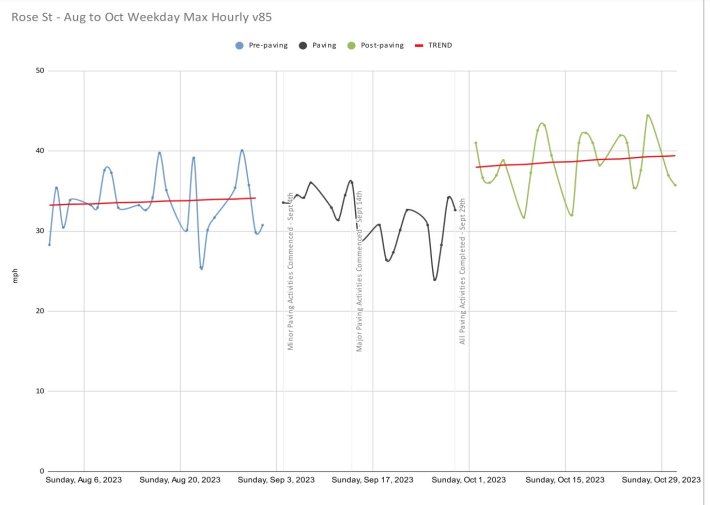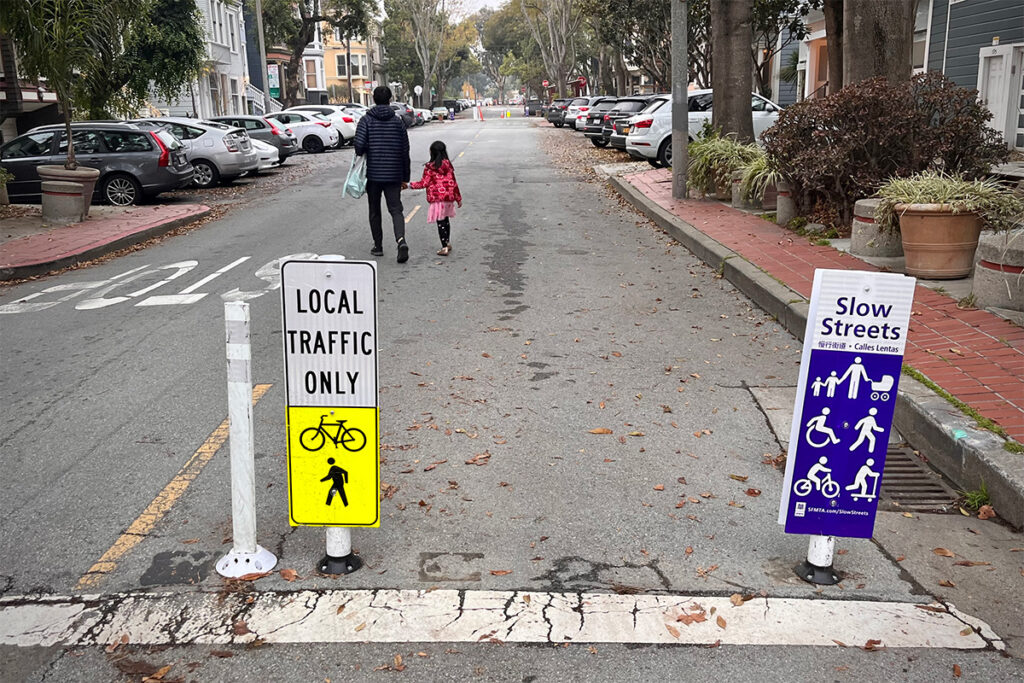Ben Brown was killed by a driver last month as he crossed Rose Street in Berkeley. That street was recently repaved, but without any improvements to safety. The smoother pavement predictably encouraged higher average driver speeds—which likely contributed to Brown's death.
This type of tragedy and the larger failure of Vision Zero efforts across the Bay Area is what motivated advocate Stephen Braitsch, founder and creative director of street safety nonprofit Transpo Maps, to create Traffic Monitoring, a new online tool that consolidates the Bay Area's Telraam data. Telraams are computers that individuals can place in their windows to monitor traffic volumes and speeds on their streets. However, until now, there wasn't an easily accessible central repository for advocates to glean information from the many individually owned Telraams. Braitsch's idea was to create "a faster and easier way to interact with Telraam’s data so advocates can quickly pull insights from it."

Two years ago, this publication wrote about how the Slow Lake campaign was using Telraam sensors to track speeds and car volumes on Lake Street in San Francisco's Richmond District. At the time, Friends of Slow Lake and other advocates were looking for something akin to PurpleAir, the crowd-sourced provider of air-quality information. The group discovered the low-cost solution from Telraam, an open-source product spun off by traffic researchers at the University of Leuven in Belgium. Since then, more and more people have hooked up the little computers in their windows to monitor traffic volumes on their streets.
However, with more data came more excuses from transportation officials. From Braitsch's post on the Traffic Monitoring website:
Residents on Lake Street in San Francisco purchased and installed the first Telraam sensors in North America and have sent several requests to SFMTA leadership begging the agency to acknowledge Telraam's data which shows daily vehicle volume and speeds exceeding thresholds set for Lake Street. Mark Dreger, program manager for San Francisco's Slow Streets Program, stated that the SFMTA "cannot use community-collected data directly for city decision-making processes due to standardization and verification protocols."
Similarly, Berkeley's leadership ignored the data warnings on Rose. "What the sensor recorded was harrowing," wrote the 'Yes on FF' campaign in a Twitter thread. "The fastest drivers tended to speed up after repaving. Each day, the max hourly V85 (the 85th percentile of speeds) increased by about 5 mph. While 5 mph may seems small, for every 10 mph increase in speeds, fatality rates nearly double."
Braitsch reminds readers that in 2022, Berkeley Councilmember Taplin introduced legislation that would have required adding traffic calming measures to a street after it is repaved, "however Berkeley’s City Council struck down that legislation after the city's transportation planners complained that it would delay repaving projects by requiring them to conduct outreach to determine what traffic calming measures on the street should look like."
From Streetsblog's view, this was an atrocious and inexcusable response that probably cost a man his life. When data shows unsafe driving conditions, it's a city's responsibility to add whatever quick-and-dirty safety features it can while permanent changes are worked out. And if repaving has to be delayed, so be it. Simply shrugging shoulders and making an already unsafe condition worse is negligent and immoral.
That said, Telraam data is far from perfect, which gives morally confused bureaucrats and feckless politicians an easy out from their fundamental responsibility to provide safe streets. Braitsch invites users of the site to suggest ways to make up for some of the shortcomings of Telraam data, such as the fact that it can't measure traffic after dark.
His hope is that improving, consolidating, and amplifying all the data about higher speeds and car volumes will translate into more leverage to force politicians and planners to prioritize safety. Traffic Monitoring, if it gets enough data and participation, might finally "...light a fire under SFMTA [and other departments of transportation] to start using every tool we have available to move the needle on Vision Zero," wrote Braitsch.
Be sure to check out the Traffic Monitoring site.





